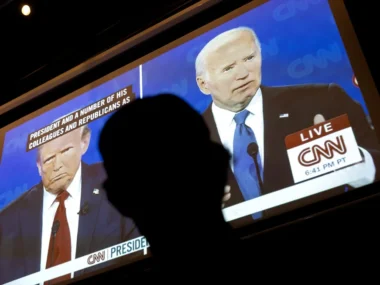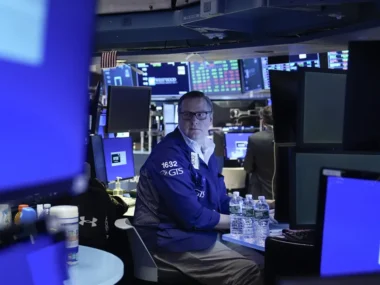Last week, the strong performance of the US dollar provided a positive indication of Americans’ purchasing power.
The US dollar index, which gauges the currency’s strength against six major peers, concluded Tuesday at 106.26, marking its highest level since early November. This surge in the dollar can largely be attributed to the impressive resilience of the US economy witnessed over the past week.
Recent data on retail spending, released on Tuesday, indicates continued consumer spending, while earlier figures from this month underscore the solidity of the US job market and the expansion of the country’s manufacturing sector. Federal Reserve officials have expressed confidence in the economy’s strength, indicating their ability to maintain interest rates at a 23-year high while awaiting further evidence of inflation moving towards their 2% target. The Fed adjusts rates if there’s clear evidence of economic contraction, as its mandate includes maximizing employment alongside stabilizing prices.
However, there are indications that inflation’s slowdown has halted, with March marking the third consecutive month of inflation readings surpassing expectations. Rising gas prices and persistently high housing costs have contributed to this overall inflationary pressure.
Fed Governor Michelle Bowman hinted in a Wednesday speech that the central bank might need to raise rates again or delay the first rate cut, citing significant financial market activity and continued growth that wouldn’t have been expected if policy were sufficiently tight.
Yet, the strength of the US economy isn’t the sole factor driving the US dollar’s rise.
Before the Bell interviewed Claudio Irigoyen, head of global economics at Bank of America, about the dollar’s rally and its implications for Americans and the global economy.
What factors are driving the surge in the value of the dollar alongside the resilience of the US economy?
Claudio Irigoyen suggests that the dollar’s strengthening stems from various factors. It’s not solely due to the Fed’s stance on interest rates but also because the US economy outperforms other major regional economies like the euro zone. He highlights that most positive surprises in economic growth originate from the US.
Moreover, geopolitical shocks prompt a flight to quality, benefiting the dollar. Irigoyen notes that incidents in the Middle East, for instance, tend to cause spikes in energy prices, affecting Europe and Japan more significantly than the US due to its greater energy independence.
What implications does a robust US dollar have for American citizens?
For Americans, a strong US dollar translates to increased purchasing power and sustained consumer spending. There’s likely to be a rise in international travel. Additionally, cheaper imports may lead to higher levels of importation. However, this situation implies that the rest of the world is essentially financing the country’s current account deficit. (The “current account” tracks a nation’s transactions with the rest of the world, encompassing imports, exports, payments, and transfers. A deficit arises when spending surpasses production, resulting in net imports.)
What are the implications of the dollar’s rally on a global scale?
The dollar’s rally doesn’t necessarily spell trouble for other economies because a weaker currency typically benefits exports, aiding in global economic rebalancing. However, the strength of the dollar isn’t an external shock but rather an internal market response to the US outperforming others.
I don’t anticipate a weakening of the dollar unless there’s more alignment in growth or monetary policies globally. Typically, the dollar weakens when China, compared to its trend, performs better than the US. Despite China’s stronger-than-expected first-quarter numbers, this isn’t the case yet. Additionally, geopolitical risks must diminish, but indications suggest they’ll persist until the US elections.
Netflix implemented measures to address password sharing. The outcome? Millions of fresh subscribers.
Netflix took a significant gamble last year by encouraging users who share passwords to create their own accounts — a move that has paid off, according to my colleague Samantha Delouya.
As the dominant force in streaming, Netflix saw a surge of over 9 million new subscribers in the first quarter of the year, reaching a record high of 269.6 million subscribers.
“It added more subscribers than many analysts, myself included, expected,” remarked eMarketer senior analyst Ross Benes. “This signals that password sharing was even more common than previously thought as Netflix keeps converting freeloader viewers into paid users.”
Despite surpassing Wall Street’s projections for subscriber growth, the company experienced a decline from its exceptional fourth-quarter performance, during which it gained 13 million subscribers. Netflix announced its intention to cease sharing quarterly subscriber numbers in 2025.
In terms of financials, the company reported $9.37 billion in revenue and earnings per share of $5.28 for the first quarter, surpassing Wall Street’s forecasts, as per FactSet data.
Nevertheless, despite its success and positive performance this year, the company’s stock experienced a decline following this announcement.











